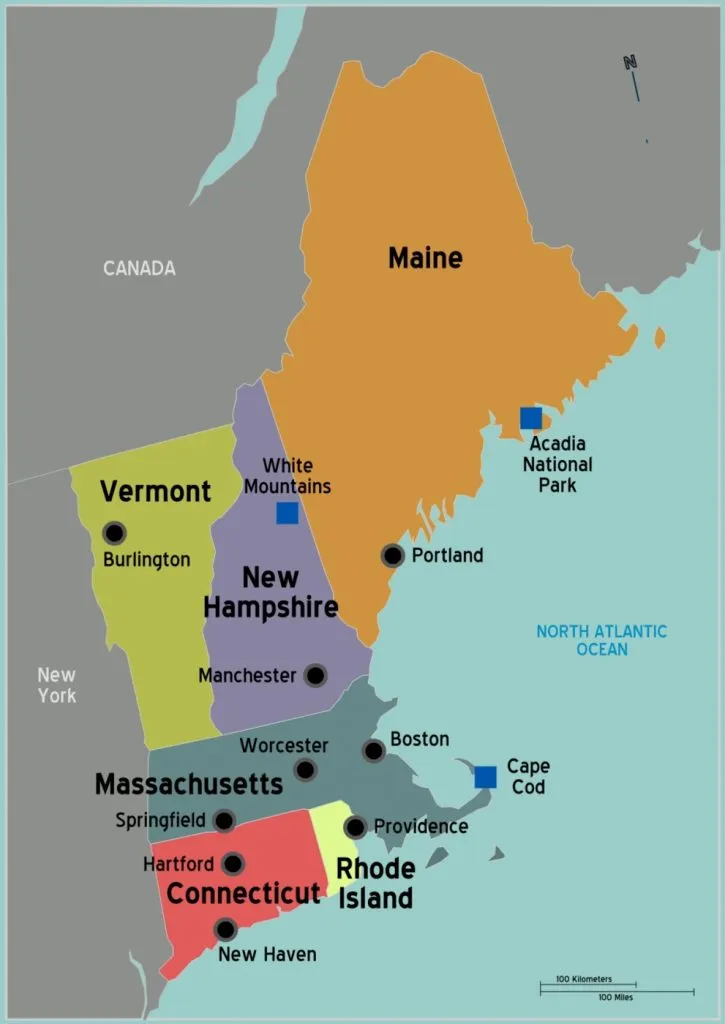Have you ever dreamt of uncovering hidden treasures, not gold or jewels, but shimmering pearls concealed in the ocean’s depths? The Maine coast, with its pristine beauty and rich marine ecosystem, might be the ideal destination for those passionate about this unique experience. However, pearl hunting in Maine is not just about luck; it’s a combination of knowledge, skills, and patience.
In this article, as a travel expert from “Du lịch khắp thế gian” (Travel the World), I will share valuable tips to help you fully enjoy your pearl hunting journey on the Maine coast, from preparation and location selection to important considerations for protecting the marine environment. Let’s explore the secrets of the Maine coast, and who knows, you might be the lucky one to find your own precious pearl!
Maine Coast – A Potential Land for Pearl Hunters
Maine, the largest state in New England, is not only famous for its historic lighthouses, charming fishing villages, and renowned lobster cuisine. It also holds a little-known secret: the potential for finding natural pearls.

Unlike cultured pearls, natural pearls form when an irritant enters an oyster’s body, causing it to secrete nacre to coat the irritant. This process is entirely natural and creates unique pearls of high value.
The Maine coast, with its clear waters, diverse ecosystem, and especially the presence of river and sea mussels, provides favorable conditions for natural pearl formation. Although it cannot be compared to tropical seas famous for pearls, pearl hunting in Maine is still an exciting and challenging experience, attracting those who love exploration and adventure.
However, it’s important to note that natural pearl hunting in Maine is not a common or easy tourist activity. The number of natural pearls is very limited, and finding them requires patience, knowledge of the marine environment, and meticulous observation skills.
Thorough Preparation for Your Pearl Hunting Trip
To have a successful and safe pearl hunting trip on the Maine coast, you need to prepare thoroughly in many aspects:
Research and Gather Information
Before starting your journey, take time to research the types of mussels capable of producing pearls in Maine, their preferred habitats, and potential coastal areas. Useful sources of information include books on marine life, scientific documents, and online forums about travel and nature exploration.
Learn about the laws and regulations related to collecting marine organisms in Maine. Some areas may have strict conservation regulations, prohibiting or restricting the harvesting of marine species. Compliance with the law not only helps you avoid legal troubles but also demonstrates your environmental awareness.
Equip Yourself with Necessary Gear
- Diving gear or snorkel: Depending on the location and search method, you may need professional diving gear or just a simple snorkel for underwater observation.
- Small shovel or knife: Used to dig in the sand or separate mussels from rocks.
- Gloves: Protect your hands from sharp objects and potentially harmful marine creatures.
- Basket or mesh bag: To hold mussels and collected items.
- Sunscreen, hat, long-sleeved shirt: Protect your skin from sun damage when outdoors.
- Drinking water and snacks: Ensure you have enough energy and hydration throughout your journey.
- First-aid kit: In case of minor injuries or accidents.
Choose the Right Time and Location
The best time to hunt for pearls in Maine is during the summer or early fall when the weather is warm and the sea is relatively calm. However, it is important to monitor the weather forecast to avoid rainy or stormy days.
Potential pearl hunting locations are often rocky coastlines with coral reefs or seagrass beds where mussels live and thrive. Some suggested areas include:
- Acadia National Park: Acadia National Park is famous for its rugged rocky coastline, coves, and diverse marine ecosystem.
- Bar Harbor: A beautiful coastal town with many beaches and rocky shore areas.
- Boothbay Harbor: A historic seaport with many small islands and sheltered bays, home to many mussel species.
- Kennebunkport: A famous resort town with white sandy beaches and submerged rocky areas.
However, these are just initial suggestions. Successful pearl hunting depends on many factors, and you may need to explore different areas to increase your chances.
Practical Experiences When Pearl Hunting on the Maine Coast
Pearl hunting on the Maine coast requires patience, observation skills, and a bit of luck. Here are some practical tips that can help you:
Observe Your Surroundings Carefully
When you arrive at your chosen location, take time to observe your surroundings carefully. Look for areas with many mussel shells, rocks with mussels attached, or signs of mussel habitats.
Pay attention to currents and tides. Mussels often congregate in areas with gentle currents and protection from strong waves. Low tide can be a good opportunity to explore areas that are usually submerged.
Apply Searching Techniques
- Visual search: Walk along the coastline, carefully observing rocks, crevices, and sandy beaches. Look for mussels that are large or unusually shaped, which may be signs of pearls.
- Shallow water snorkeling: Use a snorkel to observe underwater, looking for mussels attached to rocks or hidden in the sand.
- Sand digging: In sandy areas, you can use a small shovel to dig in the sand to search for mussels.
Inspect Mussels Carefully
When you find mussels, inspect them carefully before deciding to keep them. Only collect mussels that are alive and of sufficient size. Avoid unnecessarily harming or killing mussels.
To check if a mussel contains a pearl, you can gently shake the mussel and listen for sounds. If there is a strange noise inside, it may contain a pearl. However, the most certain way is to open the mussel to check.
Important Note: Opening mussels should be done carefully to avoid damaging the pearl (if any). If you are inexperienced, learn the technique of opening mussels or seek help from someone experienced.
Conserve and Respect the Maine Marine Environment
During your pearl hunting journey, always be mindful of protecting the Maine marine environment. It is home to many precious marine species, and we have a responsibility to preserve it for future generations.
- Do not litter: Bring a trash bag and collect all your waste, leaving nothing behind on the beach or in the water.
- Do not damage habitats: Avoid damaging coral reefs, seagrass beds, and other sensitive ecosystems.
- Collect responsibly: Only collect a sufficient number of mussels for personal purposes, do not overexploit and affect the mussel population.
- Comply with laws: Always comply with Maine’s marine conservation regulations and laws.
Conclusion: The Journey is More Than Just the Destination
Pearl hunting on the Maine coast is not only an enjoyable recreational activity but also an opportunity to explore pristine natural beauty, learn about the rich marine ecosystem, and practice patience and meticulousness.

Whether you are lucky enough to find a pearl or not, this journey will surely bring memorable experiences and unforgettable memories of the Maine coast. Prepare thoroughly, equip yourself with the necessary knowledge and skills, and most importantly, always respect and protect the marine environment, and you will have a meaningful and fulfilling pearl hunting trip.
Remember, the real treasure is not just the shimmering pearls, but also the experiences, knowledge, and love for nature you gain throughout your journey exploring the Maine coast. Wishing you a successful and joyful trip!